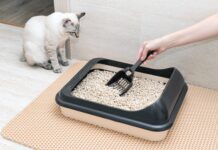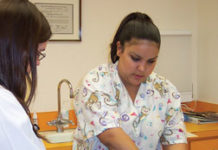We are always looking for the best and easiest ways to monitor cat health. And, since urinary problems are high on the list of things to watch, an “indicator” litter is attractive. Indicator litters are appropriate for everyday use.
These litters are made of silica. It doesn’t clump but has little dust and efficiently reduces odors. Silica gels are white, making them good for adding colormatic substances to indicate health problems. Standard colors are orange for an acidic urine, blue for a basic pH urine, red for blood in the urine, and yellow for a neutral pH urine.
Normal cat urine should be somewhat acidic at around 6.6 (neutral is 7). Depending on what your cat ate most recently, though, her urine might be slightly basic in pH. Urine pH is just one factor that your veterinarian uses to determine if a cat has a urinary problem.
Blood in the urine is more likely to indicate a problem than a minor pH change. Monitoring litters generally rely on the red color of blood itself (clearly visible against the white litter) rather than on a chemical reaction that causes a color change.
Health-monitoring litters can provide some benefits in helping identify early indicators of disease in some cases, but they should be used in close consultation with a veterinary professional.
cen.acs.org/business/consumer-products/health-monitoring-cat-litter/100/i24




